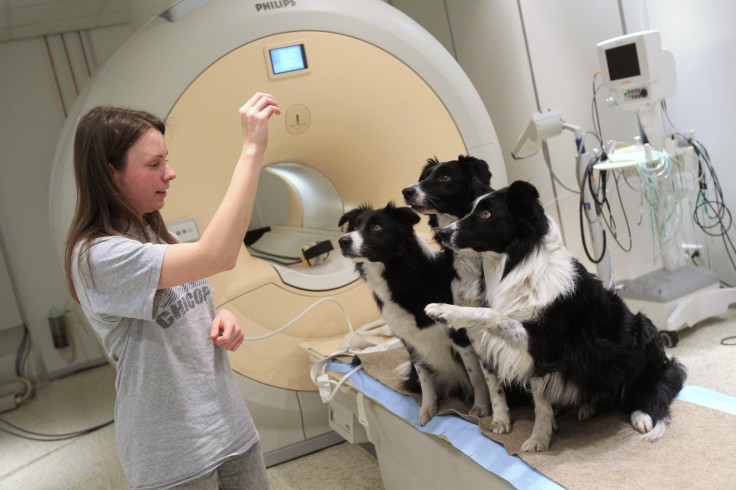Do Dogs Know How We Feel? Vocal Brain Mechanism May Allow Canines To ‘Navigate’ Human Social Environments

Any dog owner will tell you that no one knows him better than Fido. It often seems that man’s best friend can tell when his owner is blue or when there’s cause for revel. Dog lovers and scientists alike have long understood that dogs possess a remarkable ability to empathize, but researchers are still trying to understand exactly where this trait originated.
A new study, published in the journal Current Biology, offers some insight into the mutualistic human-canine bond. Researchers in Hungary say that dogs have an area of their brains, similar to a mechanism in human brains, dedicated to understanding vocal nuances. This means that certain sounds associated with emotions such as joy, sadness and anger are perceived by the human and canine brains in a similar way.
According to the research team, humans and dogs share a common ancestor in which the part of the brain controlling voice and speech developed more than 100 million years ago. This parallel brain structure allows both humans and dogs to handle social clues in a similar way.
“Dogs and humans share a similar social environment,” study author Attila Andics, of the Comparative Ethology Research Group in Hungary, said in a statement. “Our findings suggest that they also use similar brain mechanisms to process social information. This may support the success of vocal communication between the two species.”
Andics and his team used functional MRI (fMRI) scans in order to monitor brain activity in 11 dogs and their owners in response to certain sounds, including laugher, playful barking, crying and whining. After training the dogs to sit still in the fMRI machine, researchers played 200 sounds and mapped what happened in the dog's brains. Then, the researchers repeated the process with humans.
Scientists found striking similarities -- as well as differences -- between the dogs’ brain maps and those of their owners. According to Tech Times, both humans and dogs responded most dramatically when hearing sounds from their own species. Happy sounds triggered the greatest activity in the primary auditory complex of both canines and humans.
One difference researchers noted was that dogs’ brains responded more than humans’ to non-vocal sounds.
“We demonstrate that voice areas exist in dogs and that they show a similar pattern to anterior temporal voice areas in humans,” the authors noted in the study. “Our findings also reveal that sensitivity to vocal emotional valence cues engages similarly located nonprimary auditory regions in dogs and humans. Although parallel evolution cannot be excluded, our findings suggest that voice areas may have a more ancient evolutionary origin than previously known.”
Humans began domesticating dogs some 18,000 to 32,000 years ago. Archaeological evidence suggests that the gray wolf, the earliest domesticated dog, provided humans with protection, a source of food and as the ability to be a guide or service dog. Today, dogs are cross-bred and artificially selected to create and maintain new canine breeds.
The study sheds some light on the complex canine-man bond tens of thousands of years in the making, the researchers argue.
"This method offers a totally new way of investigating neural processing in dogs,” Andics said. “At last we begin to understand how our best friend is looking at us and navigating in our social environment.”
Previous work on the relationship between man and his dog has supported the notion that our furry friends know how their owners are feeling. A 2012 study published in the journal Animal Cognition found that dogs were more likely to approach a person who was crying than someone who was talking or humming. The dogs also tended to approach a crying person with submissive behaviors.
"The humming was designed to be a relatively novel behavior, which might be likely to pique the dogs' curiosity," study researcher and psychologist Deborah Custance said in a statement, according to Live Science. "The fact that the dogs differentiated between crying and humming indicates that their response to crying was not purely driven by curiosity. Rather, the crying carried greater emotional meaning for the dogs and provoked a stronger overall response than either humming or talking."
© Copyright IBTimes 2024. All rights reserved.






















